The Rio Grande is one of the mightiest rivers in North America, and beyond that, one of the largest in the world. Straddling the border between Mexico and the United States, the Rio Grande provides water resources for millions of people.
Sometimes, compared to other large rivers like the Colorado and the Mississippi, the Rio Grande goes overlooked. This is a shame, as the river encompasses a fascinating confluence of culture, ecology, and hydrology.
If you’re interested in all things river, take a look at this list of interesting facts about this grand international river.
1. It Has a Different Name in Mexico
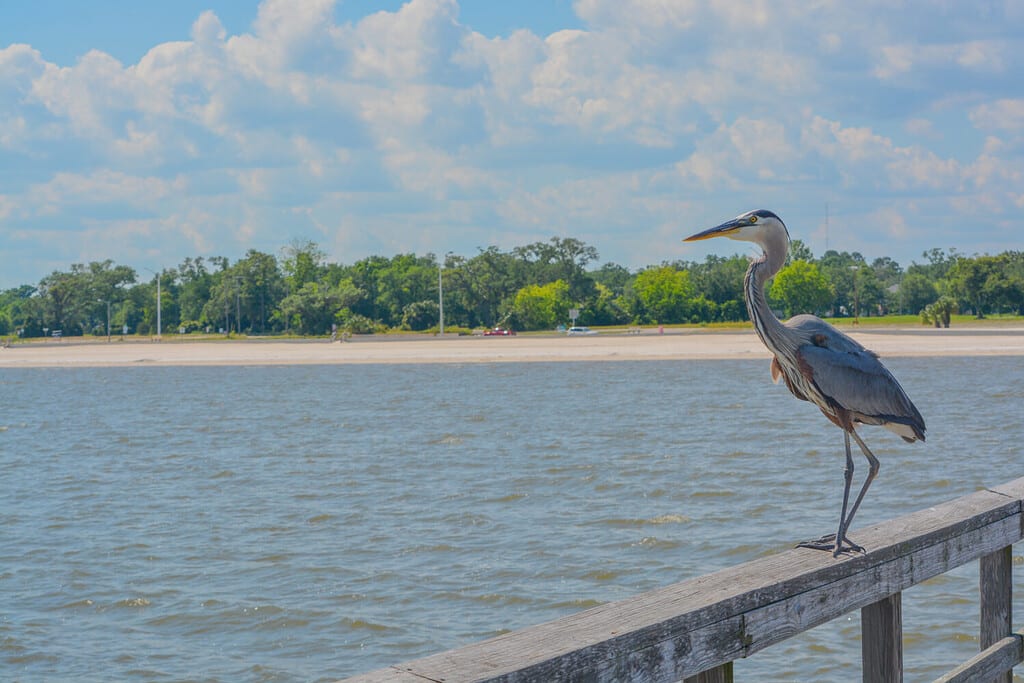
The river’s name changes depending on where you are.
©Norm Lane/Shutterstock.com
Rio Grande translates to “Big River” in English. However, the river actually has a different name in Mexico. There, its name is the “Rio Bravo”, which roughly translates into “Furious River.”
The river has been called other things as well over the course of the centuries. One of its names is Rio Grande del Norte, which means “Big River of The North”. Many of the indigenous names for the river also roughly translate to “Big River.” This largely has to do with the fact that it is the largest river in the region.
2. It’s The Fourth-longest River in The United States

The river is one of the largest and longest in the world.
©vagabond54/Shutterstock.com
The Rio Grande is the fourth-longest river in North America, stretching out over a massive 1986 miles. The rivers in North America that are longer than the Rio Grande are the Mississippi, Missouri, and the Yukon in Alaska.
Of these rivers, the Rio Grande is the only one located in the Southwest. The other very large river in the Southwest, the Colorado, measures out at 1450 miles long, making it noticeably shorter than the Rio Grande.
3. It Flows Through Three U.S. States
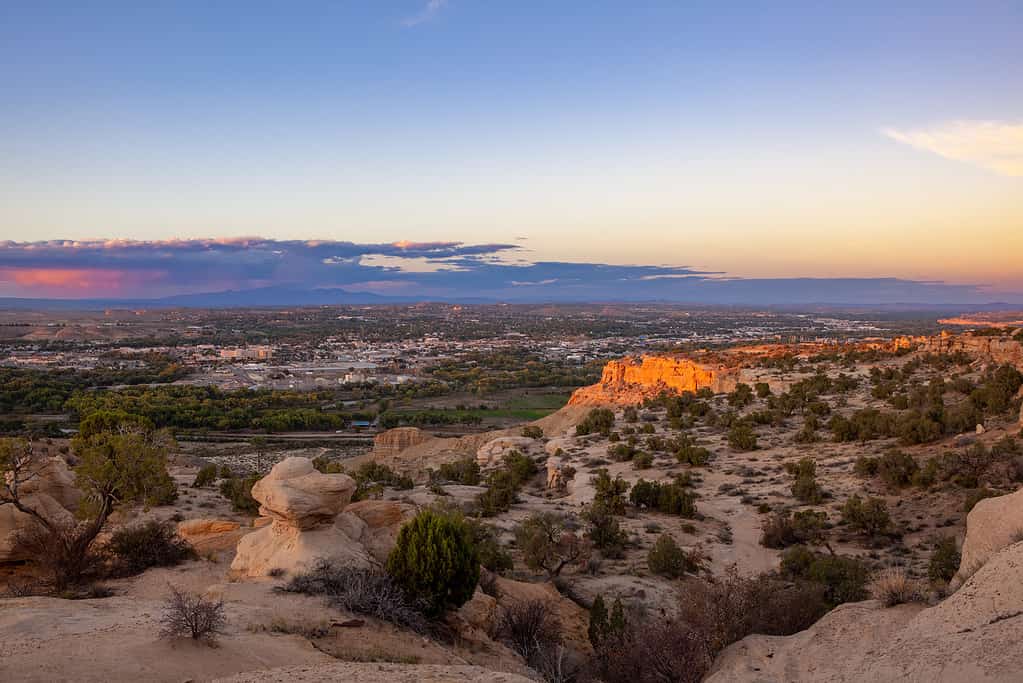
New Mexico is one of the main states to host the Rio Grande.
©MonaMakela/iStock via Getty Images
The Rio Grande flows through the states of Colorado, New Mexico, and Texas. Of these three states, most of the length of the river flows through Texas. It forms a natural border with Mexico through the length of this section of the river.
In Colorado, the river flows through high-elevation mountainous terrain from its origins in the Rocky Mountains. In New Mexico, it bisects much of the state as it runs south, providing much irrigation for local crops.
4. It Flows Through Four Mexican States

Chihuahua
is a state in Mexico that the Rio flows through. Shown here is it’s capital, also named Chihuahua.
©Esdelval/Shutterstock.com
On top of the US states that the river flows through, it also flows through four states in Mexico. This includes the Mexican states of Chihuahua, Coahuila, Nuevo Leon, and Tamaulipas. These four states comprise the northern four states of northeastern Mexico.
The river acts as a natural border between the two nations, and as such, has become a centerpiece in national debates regarding immigration. There is a high amount of illegal immigration due to the wealth disparities between the two countries. This has added a sociological dimension to the river in recent decades.
5. It’s Watershed is Enormous
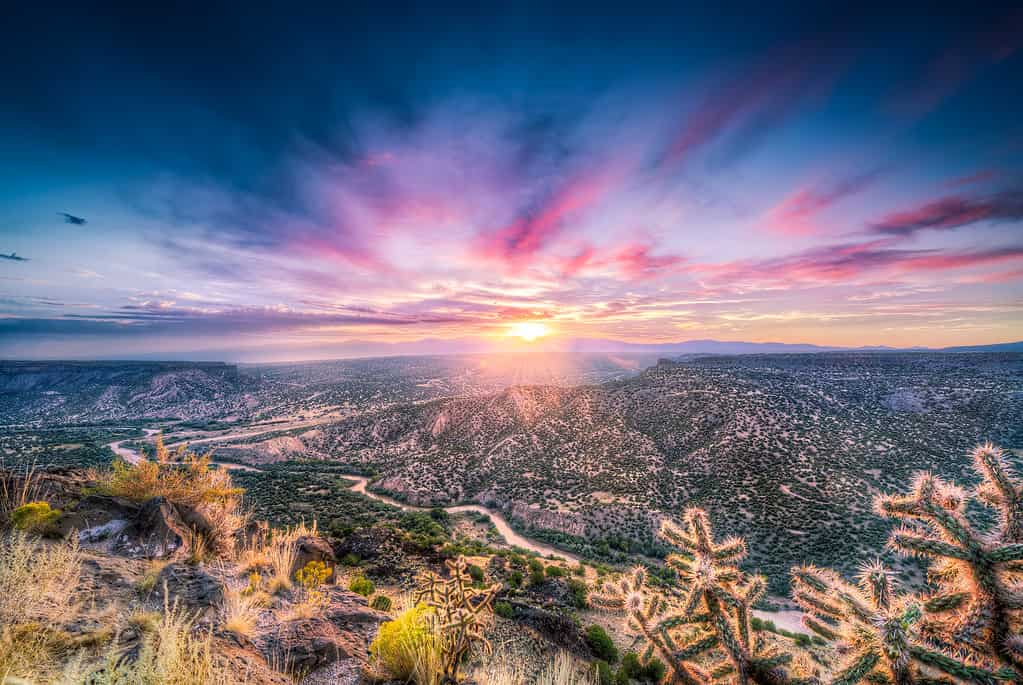
The Rio Grande’s watershed is one of the largest in the world.
©Dean_Fikar/iStock via Getty Images
The Rio Grande has a massive watershed when you add up the drainages of all its tributaries. This includes smaller rivers in the United States and in Mexico.
All in all, the watershed of this massive river adds up to about 182,200 square miles, stretching across two countries. The proportions of these drainages are approximately even between the two countries. The discharge of this river is also quite massive and averages about 2,403 cubic feet per second.
6. It Starts Out As a Tiny Mountain Stream

The river begins its life as a tiny mountain stream in the Colorado Rockies.
©KaraGrubis/iStock via Getty Images
One thing that might surprise readers is that the Rio Grande doesn’t start out so grand in its origins. In fact, the headwaters of the river start as a tiny stream in the Rocky Mountains of Colorado.
This stream is located at a very high elevation – over 12,000 feet to be exact. The stream itself counts its origins to snow melt from the surrounding peaks. The environment that the stream begins is a very high-elevation pine forest habitat. This is quite different from the desert types of environments that the river eventually finds its way to.
7. It Has Many Major Tributaries
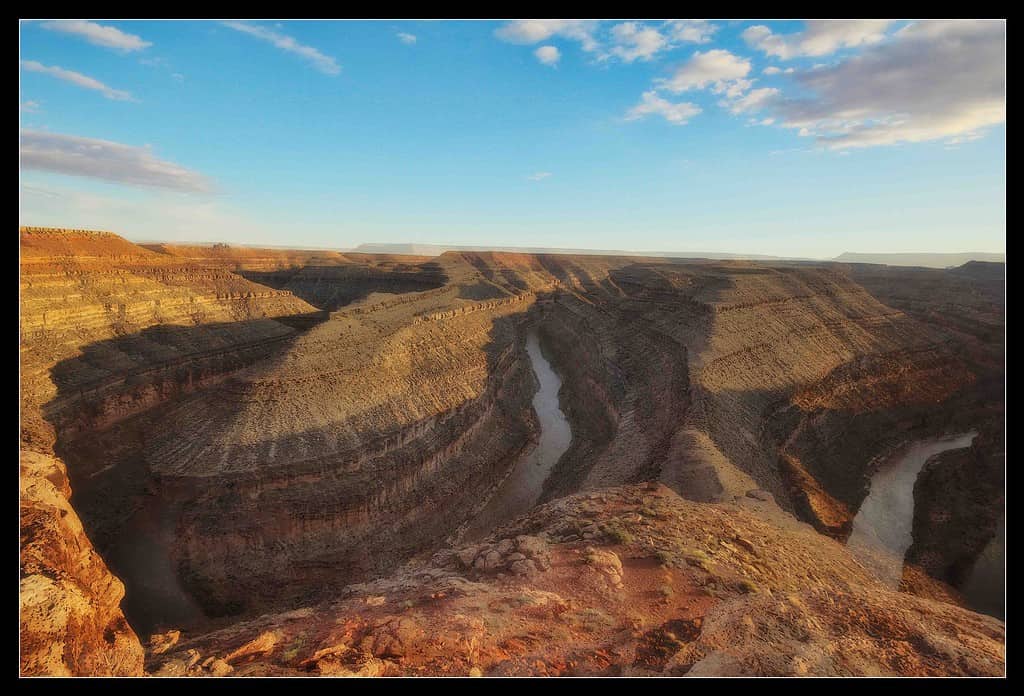
The San Juan River is one of the major tributaries of the Rio Grande.
©Jochen Hoog, CC BY-SA 3.0, via Wikimedia Commons – Original / License
There are many major tributaries of the Rio Grande in the United States. Some of the largest ones include the San Juan River, the Pecos River, the Rio Alamo, and the Conejos of Colorado.
Besides these major tributaries, there are dozens and dozens of other smaller rivers and creeks that feed into the Rio Grande. Most of these are based in Colorado, New Mexico, and Texas.
8. It Has Been Used Since Prehistoric Times

The ancestral Pueblo people of the Southwest made many uses of the Rio Grande.
There is evidence to suggest that ancient civilizations of the Southwest utilized the Rio Grande for many of the same reasons that it is utilized today. As a major water source in the arid Southwest, the river is bound to be put to use in a myriad of different ways.
There are artifacts that suggest that the ancient peoples of the Ancestral Pueblo peoples migrated from the Four Corners region of the United States to the Rio Grande region in times of extreme drought. In the river’s origins in Colorado, there is evidence of settlement surrounding the area as far back as 5000 BC.
9. It Forms The Southern Border of Texas
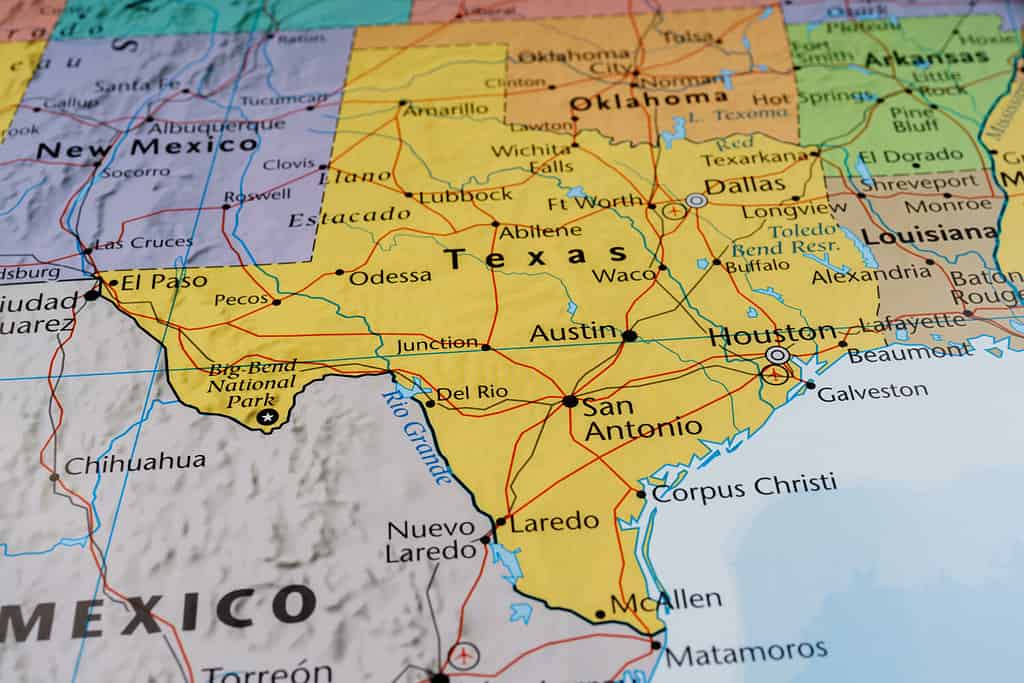
The southern border of Texas is entirely comprised of the Rio Grande.
©Alexander Lukatskiy/Shutterstock.com
The entirety of the southern border of Texas is comprised of the Rio Grande. This makes sense if you look at the map of the state. Its southern border winds asymmetrically down to the Gulf of Mexico.
As mentioned earlier in the post, this has created some complex international dynamics between the United States and Mexico. Most of the dynamics have centered around water rights with the river. Both countries need the water from the Rio Grande to irrigate important farmland.
Since the turn of the century, the United States has heavily deterred border crossings from Latin America. This has forced migrants into using wilderness areas to attempt entry. Big Bend National Park and the Rio Grande have become part of this story.
10. It Irrigates 193,000 Acres of Farm Land
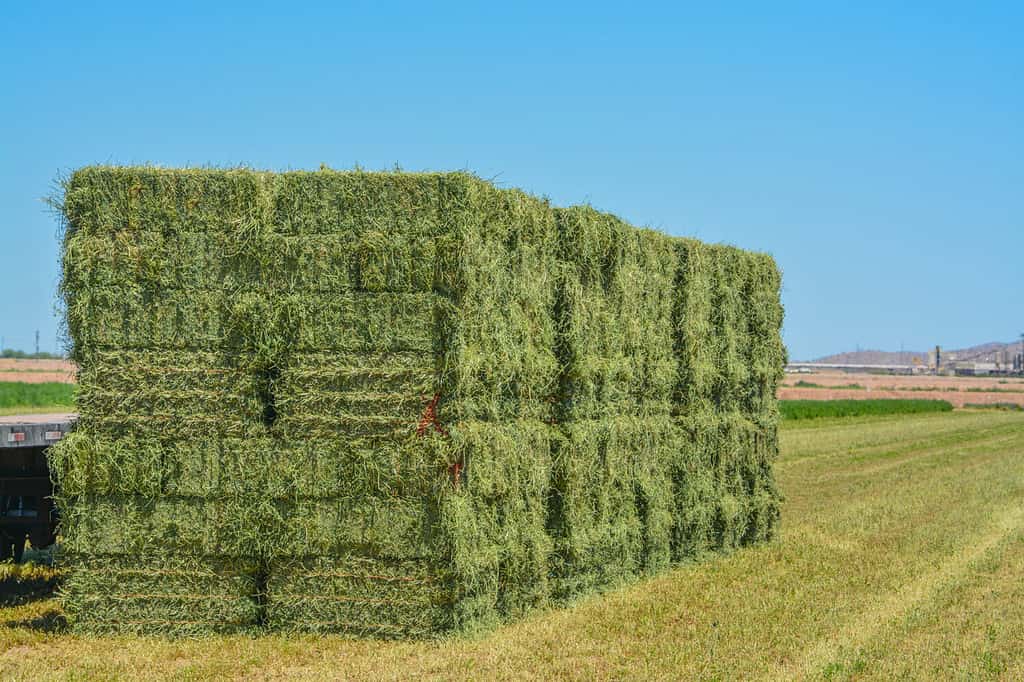
The river irrigates a significant amount of farmland. Shown here are alfalfa bales.
©Norm Lane/Shutterstock.com
Between the United States and Mexico, the Rio Grande Irrigates an impressive amount of farmland. In fact, it irrigates almost 200,000 acres between the two countries.
This irrigation is priceless for both nations, as the Rio Grande is one of the only rivers with enough water to satisfy the need for water in this very dry part of the world. Some of the crops that are grown in this region include corn, cotton, pecans, and more. In particular, corn has been grown in this region for centuries by many different groups of people.
The water rights surrounding the Rio Grande have been in a state of flux between the United States and Mexico for decades. The river is an example of one that is “overpartitioned”. This means that there are more users of the river than water to provide for them.
11. It Is Heavily Dammed

The Falcon Reservoir is the product of damming the river at strategic points.
©Image Science and Analysis Laboratory, NASA-Johnson Space Center / Public Domain – Original / License
There are multiple large dams peppered across the Rio Grande. These dams allow the river to be used for its myriad purposes. At the same time, the dams have impacted the river’s ecology significantly. It is not ultimately a free-flowing river.
Some of the major dams of this river include the Cochitl Dam, Rio Grande Dam, Caballo Dam, Elephant Butte Dam, and Anzalduas Dam. These dams exist up and down the extent of the river in its natural range.
12. It’s Responsible for Big Bend National Park
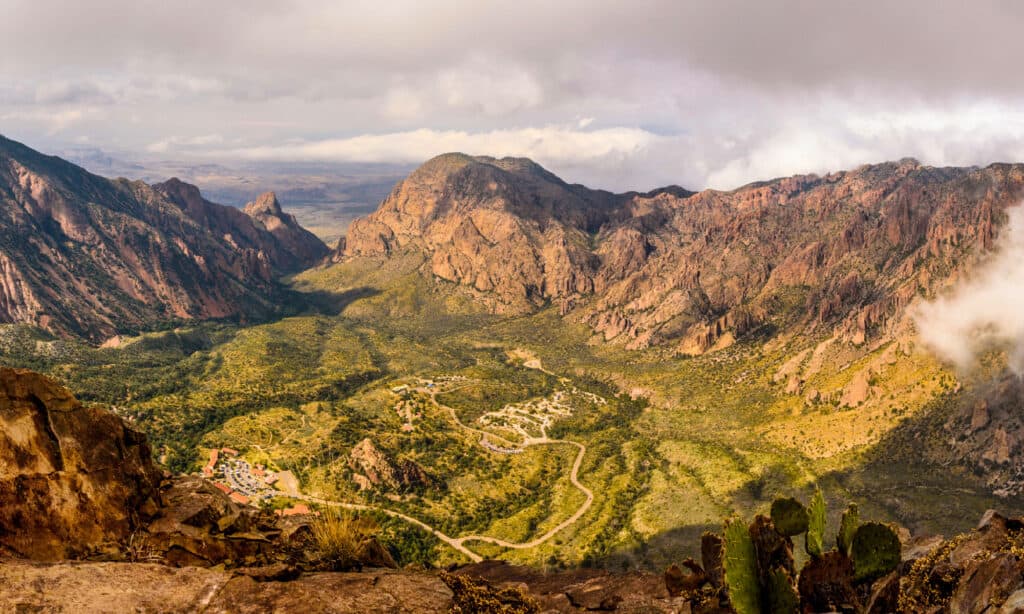
The Chisos Mountains are the only mountain range in the United States entirely within a national park.
©iStock.com/Tim Speer
Big Bend National Park is a national park in Texas that owes its existence to the Rio Grande. The park serves to protect some of the Chihuahuan desert habitat that exists in Texas. The Rio Grande’s relentless course through the eons has cut massive canyons into the landscape of Big Bend. Even the name “Big Bend” refers to a large bend in the Rio Grande.
This national park is a home and reserve for many species of plants and animals that exist nowhere else in the United States. Some of these species exist nowhere else in the world outside of the Chihuahuan Desert. Overall, the park covers a gigantic 800,000 acres of land. This offers visitors a highly diverse set of ecologies and recreational opportunities.
13. It’s Home to Many Endangered Species
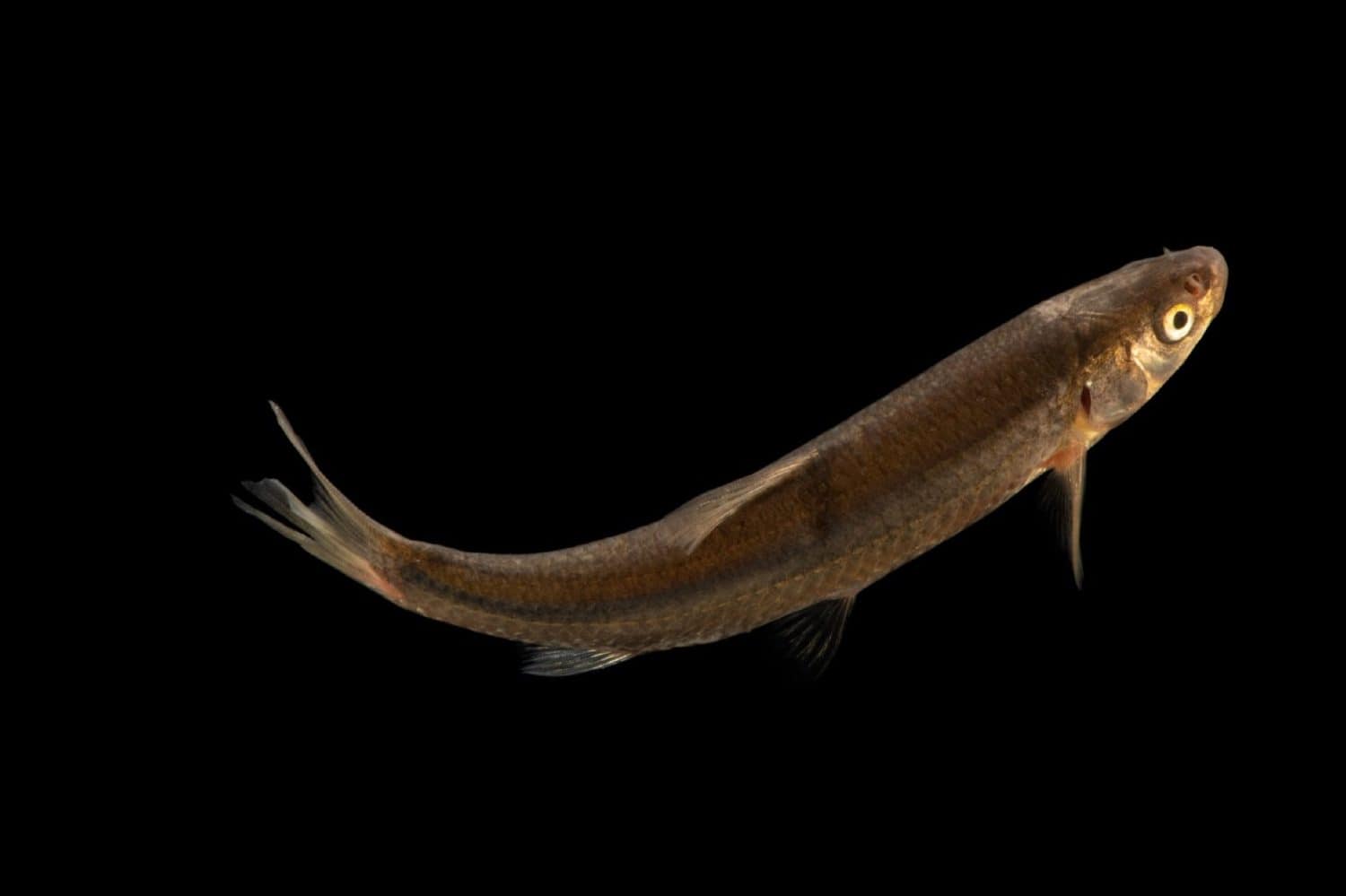
The Rio Grande Silvery Minnow is highly endangered.
©Usha Roy/Shutterstock.com
The river itself is home to many types of endemic and endangered species. There are several types of fish that exist only in the Rio Grande. Out of the 129 species of fish that live in the river, 69 exist only in the Rio Grande exclusively. There are also numerous mollusk species that exist only in the Rio Grande.
The droughts that have afflicted the Rio Grande and the rest of the Southwest, in general, have also placed heavy strains on many of the endemic fish of the river. Some of the droughts that have afflicted the river in recent years have been severe enough that they have stopped its flow altogether. This has been disastrous for fish such as the Rio Grande Silvery Minnow – this might not come as much of a surprise, as fish need plenty of water to survive, as most people know.
14. It Suffers From Drought

Much of the arid west suffers from periodic droughts.
©Danita Delimont/Shutterstock.com
As mentioned above, the Rio Grande has become afflicted with drought in recent years. These droughts have become more intense due to the agricultural strains on the river’s water. In addition, the effects of climate change have ravaged the consistency of the river’s rain fall and snowmelt. All in all, this is a very serious situation for the people and non-human life that exist alongside the river.
15. It Was First Charted in 1519 By The Spanish
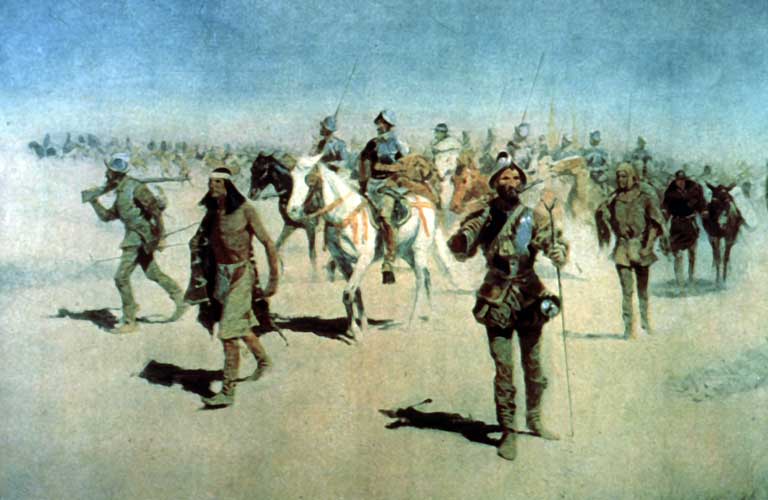
Coronado was a ruthless conquistador and explorer.
©Frederic Remington, Public domain, via Wikimedia Commons – Original / License
Of course, many groups of people knew about the Rio Grande prior to the Spanish. But Spanish Explorers are the first group of people to make a chart and map of the Rio Grande in its entirety.
The first Spanish expedition to accomplish this feat was led by a man by the name of Francisco Vasquez de Coronado. Coronado was a conquistador who spearheaded many expeditions throughout North America. Oftentimes these expeditions were in search of El Dorado – the mythical Spanish city of gold. As you can imagine, none of these expeditions went very far.
The photo featured at the top of this post is © R. Wellen Photography/Shutterstock.com
Thank you for reading! Have some feedback for us? Contact the AZ Animals editorial team.







